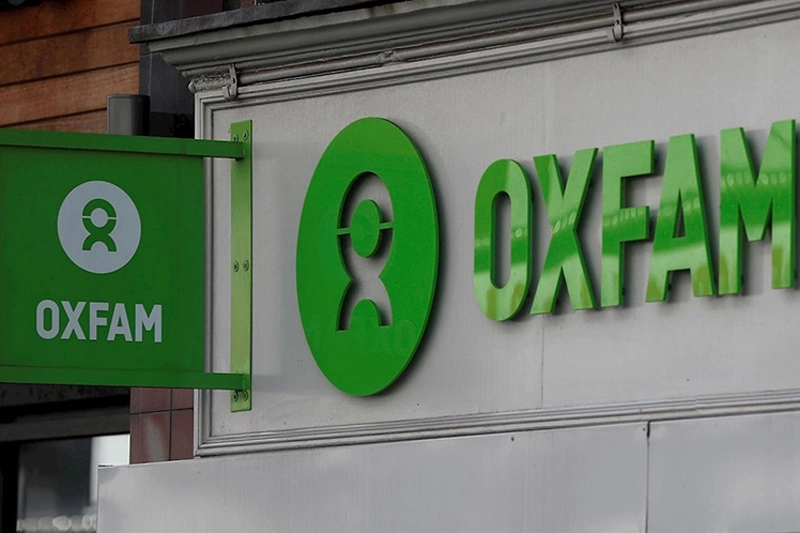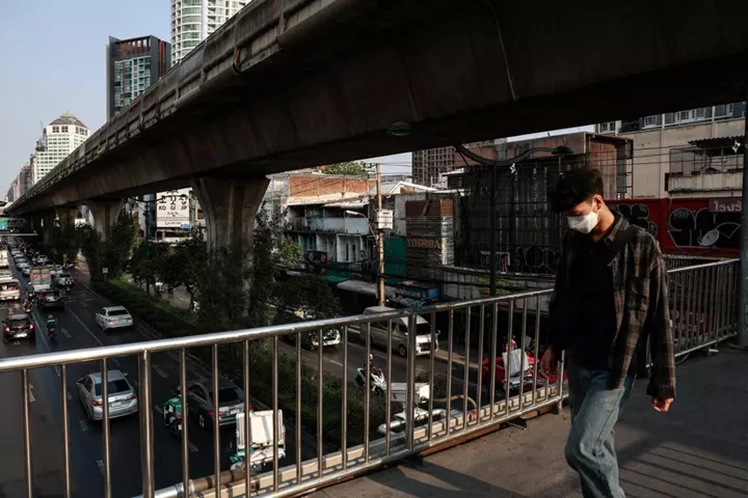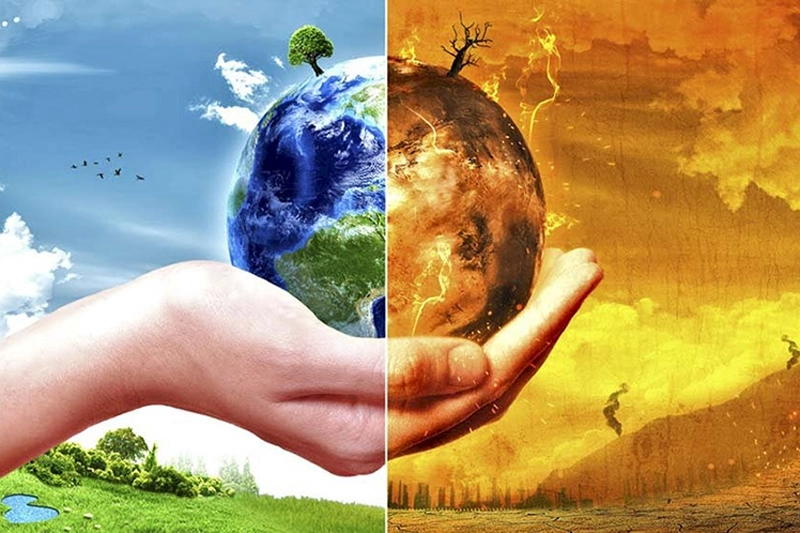Climate degradation is accelerating and seems unstoppable. Its consequences are growing daily, including “new” cataclysms and the weakening of human health. These are issues that will be on the table at the Climate Summit taking place in Belém do Pará, Brazil, until November 21st.
Any individual from the small group comprising the wealthiest 0.1 percent of the planet produces more carbon pollution in a single day than someone from the poorest 50 percent does in an entire year. To illustrate: each billionaire emits more than 800 kg of CO2 per day. Not even the strongest person in the world could lift that much weight. Conversely, any individual from the poorest sector of the planet produces an average of two kg of CO2 per day, a load that even a small child could easily lift.
The non-governmental organization Oxfam International has just published its report. “Climate Plunder: How a Powerful Few Are Leading the World to Disaster.” Their findings strongly corroborate this reality. Since 1990, total greenhouse gas emissions from the wealthiest 0.1 percent have increased by 32 percent. While those from the poorest half have increased by only three percent. For this NGO, there is no longer any doubt that responsibility for the climate crisis is inextricably linked to economic power. Within the framework of an already devastating production and consumption growth model.

The report formulates a compelling hypothesis: if everyone emitted harmful gases as this small group that concentrates global wealth does, the carbon budget—that is, the amount of CO2 that can be emitted without causing a climate disaster—would be exhausted in less than three weeks.
Although tinged with unrealistic expectations, the only way to avoid this tragedy is to ensure that global warming does not exceed 1.5°C. The maximum limit agreed upon by the international community at the COP 21 Paris Climate Summit in 2015. For this to be possible, the super-rich sector would need to reduce its per capita emissions by 99 percent by 2030.
The report offers more than just figures. It also analyzes how billionaires are using their political and economic influence to perpetuate the rest of the population’s dependence on fossil fuels and maximize their own profits. “The super-rich not only consume excessive amounts of carbon,” it states. “But also actively invest in and profit from the most polluting companies.” Nearly 60 percent of their investments have a high climate impact, such as those in oil and mining.
Oxfam also reports that each billionaire produces, on average, 1.9 million tons of CO2e per year through their investments and businesses. This figure, to emit such a large quantity of greenhouse gases, is equivalent to nearly 10,000 trips around the world in their private jets. According to Oxfam, the investments of this group—approximately 308 billionaires and even multibillionaires—amount to more than the combined emissions of 118 countries. In short: “The climate crisis is a crisis of inequality. The world’s richest people are financing and profiting from climate destruction. Leaving the majority of the world’s population to bear the fatal consequences of their unchecked power.”
Additionally, and equally concerning, emissions from the wealthiest one percent are enough to cause approximately 1.3 million heat-related deaths by the end of the century. As well as $44 trillion in economic damage that low- and lower-middle-income countries will suffer by 2050 for the same reason. Oxfam concludes that: “The effects of this climate damage will disproportionately affect those who have contributed least to the climate crisis. Particularly people living in the Global South, with the greatest impact on women, girls, and Indigenous groups.”
Civilization in a coma and on life support

“Health systems will soon be overwhelmed,” warned the international academic collaboration network The Lancet Countdown in its study. “The Countdown to the Impact of Climate Change on Human Health,” in late October. Thirteen of the twenty health threat indicators. It argues, will reach record levels by 2025, and the main cause is the reliance on non-renewable fuels.
Coordinated and published by University College London in collaboration with the World Health Organization (WHO). The study brings together the contributions of 128 experts from 71 academic institutions and United Nations agencies worldwide. According to its October edition, 2024 was the hottest year on record. Exposing each inhabitant of the planet to an average of sixteen days of dangerously high temperatures.
The excessive heat led to a record one death per minute. The most vulnerable—children under one year old and the elderly—suffered through heat waves lasting up to twenty days. A 304 percent increase compared to the period 1986–2005. As a direct consequence, there was a significant increase in acute infections, chronic diseases, and cancer, as well as neurological disorders.
Furthermore, air pollution from wildfires also has devastating effects on human health. In 2024, it caused 154,000 deaths, another record high. Every year, more than two million deaths are due to pollution from burning fossil fuels. In addition to another two million from household pollution caused by heating or cooking with wood, coal, or kerosene.
Another source of concern is vector-borne diseases. The Lancet Countdown reports a significant expansion in the range of mosquitoes and other vectors. Such as ticks and sandflies, as the climate warms. For example, the Culex mosquito, a vector of the West Nile virus, has already reached Europe, and its presence has even been observed in Iceland. Conditions conducive to malaria transmission are now also extending far north across the globe. (https://lancetcountdown.org/2024-report/).
Weather bombshell
The violent Storm Benjamin battered parts of Western Europe on the night of October 22 and the following days. In France, 19 departments were placed on orange alert. Wind gusts locally reached 170 km/h, and torrential rains continued for several days, raising fears of flooding. Several areas of Switzerland were also placed on alert.
The intensity of Benjamin was exceptional for this time of year, to the point that meteorologists believe this phenomenon could have become a “weather bombshell.” As stated in a recent article on reporterre.net, an independent media outlet specializing in ecology. The term “bomb storm” refers to atmospheric depressions (characteristic of storms) where atmospheric pressure drops abruptly and within a few hours. This drop causes the air to rotate very rapidly, generating excessively violent winds.
Experts maintain that global warming further intensifies this type of phenomenon. As a result, all of Europe could face more intense storms in the future due to climate change, with the direct consequence of increased rainfall. Mechanically, each additional degree of air temperature translates into a seven percent increase in humidity. A law of thermodynamics that explains the increased intensity of rainfall.

The European Climameter project, specializing in studies on the role of climate change in extreme weather events. Estimates that between 10 and 20 percent of the increased rainfall during recent storms in Europe is a direct result of climate change (https://reporterre.net/Les-systemes-de-sante-seront-bientot-debordes-un-rapport-alerte-sur-les-consequences-sanitaires-du-changement-climatique).
Similarly, although in a different context, a two-degree increase in ocean temperature contributed to the fury of Hurricane Melissa. Which devastated Jamaica, Cuba, and much of the Caribbean starting on October 28th. In some places, winds reached almost 300 kilometers per hour.
Global warming, extreme weather events, and increasing health crises: all of this constitutes a new chain of hardships in the growing deterioration of the environment, with serious consequences for public health. These conditions give a new, much more dramatic meaning to the popular saying “the heat is killing me,” as old as it is relevant, and not only during summers in tropical and subtropical regions. Now, it’s happening in Mediterranean regions as well.
With information from Sergio Ferrari/Prensa Latina
Sergio Ferrari (1953) is an Argentine journalist based in Switzerland, where he regularly contributes to Swiss, European, and Latin American media outlets. He is the author or co-author of several books, including “Sowing Utopia,” “Nicaragua: The Internationalist Adventure,” “The Other Side of the Peephole,” “Leonardo Boff: Lawyer of the Poor,” “Neither Mad nor Dead,” etc. He has been an activist with the Swiss media union, Syndicom, since its founding and served on its National Committee for the press sector until December 2024.
- The climate is burning, life is sickening - 14 de November de 2025
- Recovery that brings back smiles - 14 de November de 2025
- AI achieves first pregnancy in a case of severe male infertility - 14 de November de 2025

